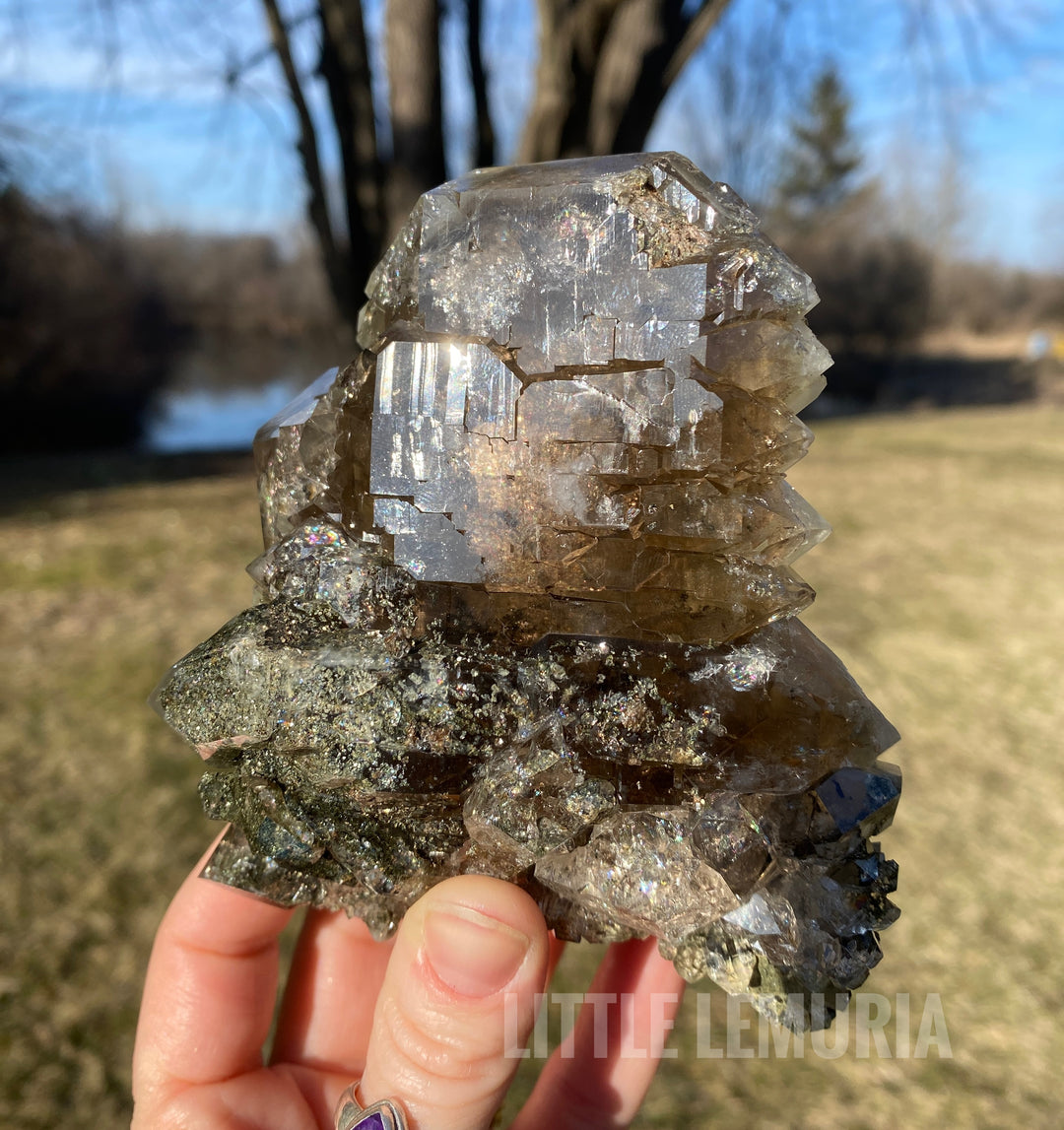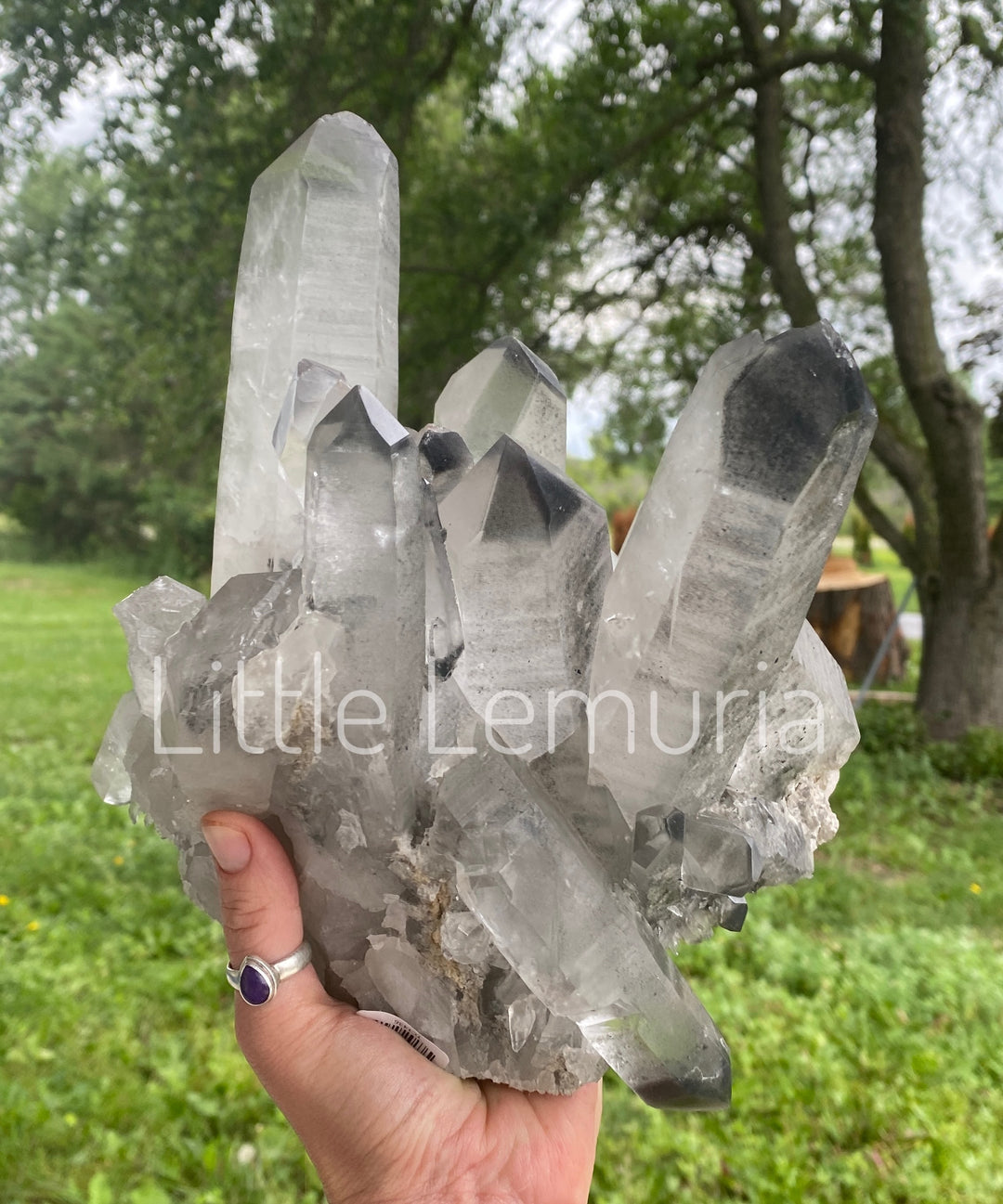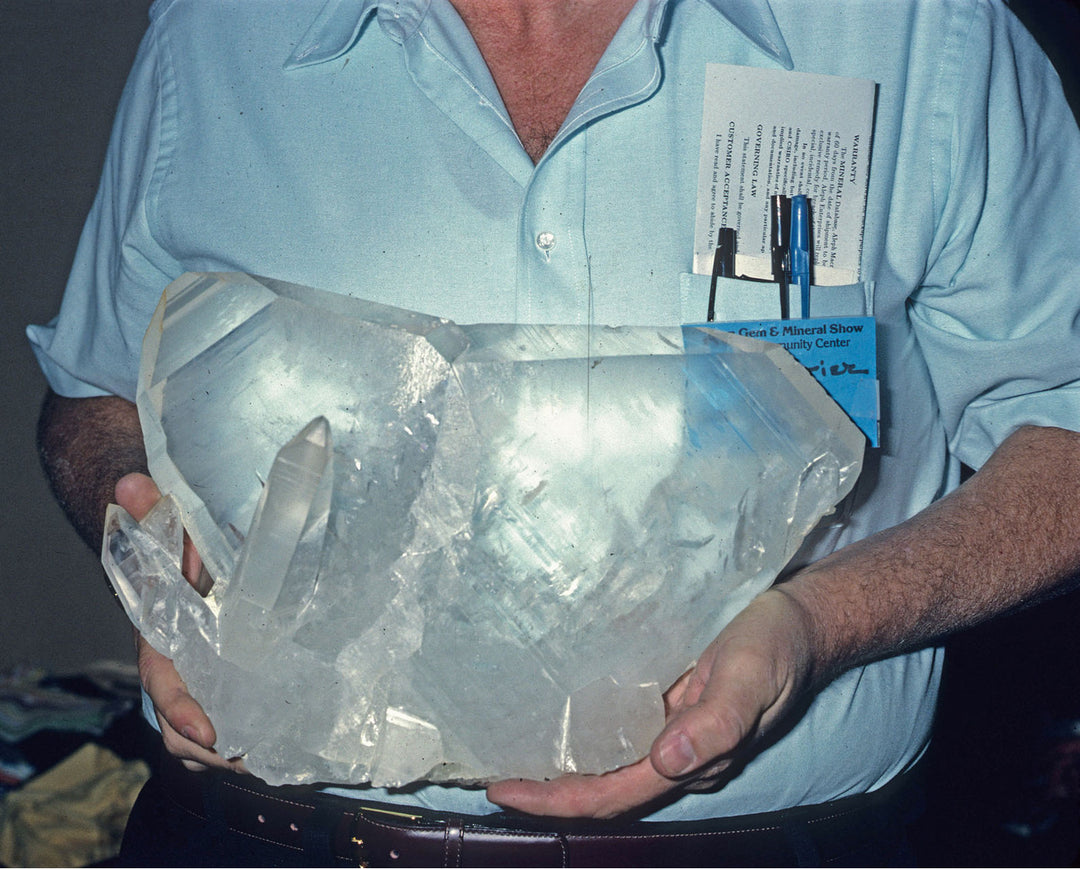Mineral Testing ins and outs
If there’s one thing we have learned in the crystal business, it’s that you can’t believe everything that you hear. There seems to be a lot of identification guess work among dealers, particularly with stones of Brazil. No matter how much a shop may trust a vendor, that doesn’t remotely guarantee that the vendor is sharing correct information. I don’t believe this is done intentionally, but how a stone is tested is very important. Mineral testing is not commonplace for crystals that can be sold under popularized trade names such as Phantom quartz, Lemurian quartz, Lithium quartz, etc. Curiosity got the best of Doug and I, and we wanted to be certain we were accurately identifying the inclusions in our quartz for our customers.

The proof is in the details when it comes to mineral testing. Here at Little Lemuria we send minerals to a laboratory within a state mineral museum. This means, our trusty scientist has access to all the equipment he needs to ensure he can carry out a variety of techniques. The top of every test result we receive gives a detailed report of the means used to reach the result. Here is an example: “An AMRAY 1830 SEM operated at 25 kV acceleration potential, 24 mm working distance, 0 degrees sample tilt, coated with 250 Å carbon, and also using the attached XRF unit operated at 30 kV. A Beckman Spectrospan 5 DCP was used in the lithium determination.” This terminology is above my pay grade, but what I do know is that there isn’t any guess work going into their process! The piece of equipment below is the glorious $30,000 AMRAY microscope.

Rewind a few years ago when we received a shipment of “black tourmaline” towers that turned into a whole debacle. We were told by our reliable and long-time supplier that the material had been tested and the results were tourmaline. I requested pictures of the rough material and it was in fact exhibiting striations and, at the time, I did not question the testing any further. As it turns out it was a combination of materials, the majority of which was obsidian, not tourmaline. When we had the material tested at the lab we found out that obsidian can host mineralized fractures, meaning that there can be veins of different minerals (in this case black tourmaline) hosted within the obsidian.

Why did the testing in Brazil not have these details? When I inquired, our supplier eagerly said he would share a video of the test results to ease my mind. The photo above shows the device used in the video to test the stone. This is a $200 very general testing device. They poked the surface with the little rod and the needle pointed to tourmaline (note how tourmaline overlaps the obsidian glass reading in the picture below). It all made sense in this moment why so many crystals have been misidentified. Testing means different things to different shops and suppliers. The only people we rely on for obtaining accurate information at this point in the game, is ourselves.

Head over to our mineral testing page to see the lastest results from “black phantom Lemurians”, “grey lithium phantom quartz”, and “blue smoke Colombian Lemurians”.
Happy learning!






